UPSC Daily Current Affairs: 4th August 2025 | Current Affairs & Hindu Analysis: Daily, Weekly & Monthly PDF Download
GS2/Polity
El Salvador's Presidential Reelection Bill
Source: The Economist
 Why in News?
Why in News?
Recently, the ruling party in El Salvador has enacted a bill that permits indefinite presidential reelection and extends presidential terms to six years. This legislative change has significant implications for the political landscape of the nation.
Key Takeaways
- The bill allows for unlimited presidential reelections.
- Presidential terms have been extended from five to six years.
- This marks a major shift in governance within El Salvador.
Additional Details
- About El Salvador: El Salvador is a small, mountainous nation located in Central America, bordered by Honduras to the northeast, Guatemala to the northwest, and the Pacific Ocean to the south. It is unique as the only Central American country without a coastline on the Caribbean Sea.
- Topography: The country's Central Region features a diverse landscape that includes mountains, valleys, and a volcanic plateau. The region is home to several prominent volcanoes, such as San Salvador, Ilopango, and San Vicente, which are part of the Sierra Madre mountain range.
- Highest Point: Cerro El Pital is the highest point in El Salvador, reaching an elevation of 2,730 meters (8,957 feet). It is situated on the northern border with Honduras.
- Lempa River: This river is a crucial geographical feature in El Salvador.
- Major Lakes: The country is also home to significant bodies of water, including Lake Ilopango, Lake Coatepeque, and Lake Güija.
- Climate: El Salvador has a tropical climate, but it is moderated by elevation in the interior, resulting in generally warm temperatures rather than hot.
- Capital City: The capital of El Salvador is San Salvador.
This new legislation is poised to reshape the political dynamics in El Salvador, raising questions about democratic governance and the potential for consolidation of power.
GS3/Defence & Security
HQ-16 Missile
Source: EurAsian Times
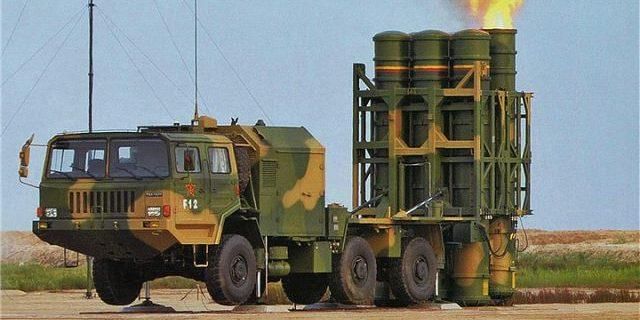 Why in News?
Why in News?
The United States military showcased a mockup of the Chinese HQ-16 surface-to-air missile system at the Experimental Aircraft Association's ‘AirVenture Show’ in Oshkosh, Wisconsin, highlighting its significance in contemporary military technology.
Key Takeaways
- The HQ-16 is a medium-range Surface-to-Air Missile (SAM) developed by China.
- It is based on Russia’s Buk missile family and designated as CH-SA 16 by NATO.
- The missile is designed to target various aerial threats including aircraft, cruise missiles, helicopters, and UAVs.
Additional Details
- Launch System: The HQ-16 employs a vertical launch system, enabling 360-degree coverage and the ability to operate effectively in complex geographical settings.
- Mobility: It is mounted on a Chinese-designed 6x6 high mobility chassis, which enhances maintenance and road mobility compared to tracked platforms.
- Capacity: Each launch vehicle can transport up to 6 missiles.
- Specifications: The missile weighs 650 kg, measures 5.2 m in length, and has a diameter of 0.34 m.
- Interception Range: It can intercept targets at altitudes ranging from 15 km to 18 km, with a maximum range of 40 km for aircraft and between 3.5 km and 12 km for cruise missiles traveling at 300 m/s.
- Guidance System: The missile's guidance utilizes inertial guidance combined with semi-active radar homing during the terminal phase.
This unveiling underscores the advancements in missile technology and the ongoing military developments between global powers, particularly in the context of potential future conflicts.
GS3/Science and Technology
Biologics & Biosimilars: The Next Frontier in Affordable Medicines
Source: Science Direct
Why in News?
The emergence of biologics and biosimilars is revolutionizing modern medicine, moving beyond traditional small molecule drugs. These complex therapies offer targeted treatments that can significantly impact healthcare.
Key Takeaways
- Biologics are large, complex drugs derived from living organisms.
- Biosimilars are near-identical copies of biologics, available after the original patent expires.
- Regulatory reforms are essential for improving access to affordable medicines in India.
Additional Details
- Small Molecule Drugs:These are low molecular weight compounds that are chemically synthesized. They are characterized by:
- Fixed structures that are chemically stable.
- Ease of replication and patent protection.
- High costs during patent protection, followed by significantly reduced prices post-expiry (e.g., Sovaldi dropped from $84,000 to $1,000).
- Biologics:These are large, intricate drugs created from living cells or organisms. Examples include:
- Insulin (~5,800 daltons)
- Remicade (~150,000 daltons)
- Biosimilars: These are close replicas of biologics but are not identical due to their complex production processes. They provide lower-cost alternatives to biologics after patent expiration.
- Regulation and Reform:
- Current regulations require costly trials for biosimilars, including animal and clinical trials, unlike generic drugs.
- Countries like the UK and USA are reducing the burden of animal trials, promoting innovations like organ-on-chip and human models.
- India still adheres to older regulatory norms, although waivers are under review, and clinical trials remain mandatory.
- Significance for India:
- Access to generic small molecules has transformed Indian healthcare.
- Affordable biosimilars could similarly enhance treatment for chronic and rare diseases.
- Regulatory reform is critical to lowering costs, speeding up access, and expanding healthcare coverage.
In summary, as biologics and biosimilars continue to evolve, they present both challenges and opportunities for healthcare systems, particularly in India, where regulatory changes could pave the way for more affordable treatment options.
GS2/Polity
Collusive Litigation
Source: Deccan Herald
Why in News?
The Supreme Court has recently taken suo motu cognizance of the issue of "collusive litigations" involving officials of the Bengaluru Development Authority (BDA).
Key Takeaways
- Collusive litigation refers to lawsuits where the parties are not genuinely adversarial but cooperate to achieve a specific outcome.
- Such suits raise concerns about abuse of the judicial process and the integrity of the adversarial system.
Additional Details
- Definition: Collusive litigation is characterized by cooperation between parties to manipulate judicial outcomes, often undermining the essence of genuine legal disputes.
- Risks:
- Potential abuse of the legal system through manipulation.
- Undermining the adversarial nature that courts rely on for fair decision-making.
- Using collusive suits to bypass normal legislative processes.
- Legal Framework in India: Collusive decrees can be set aside if a party not involved in the collusion can prove the existence of collusion or fraud. The High Court can intervene under Article 227 in cases of collusion.
- A party involved in a collusive decree cannot seek to have it set aside. The burden of proof lies with the party challenging the decree to demonstrate collusion.
- Court rulings have established that under a general prayer for relief, courts may set aside a decree found to be collusive, even without a specific request for such action.
This ongoing issue highlights the need for vigilance in the judicial process to maintain its integrity and prevent manipulation through collusive practices.
GS3/Defence & Security
Central Industrial Security Force (CISF)
Source: The Hindu
Why in News?
The Union Ministry of Home Affairs (MHA) has recently approved the recruitment of 58,000 additional personnel for the Central Industrial Security Force (CISF) in anticipation of future industrial hubs in areas currently impacted by Left Wing Extremism (LWE).
Key Takeaways
- The CISF is a Central Armed Police Force (CAPF) in India, under the Union Ministry of Home Affairs.
- It was established in 1969 with a sanctioned strength of three battalions and has grown to over 188,000 personnel.
- The force provides security for critical infrastructure, including airports and nuclear installations.
Additional Details
- Establishment: The CISF was formed in 1969 through the CISF Act of 1968, initially tasked with securing sensitive public sector undertakings. It was declared an Armed Force of the Union in 1983.
- Organizational Structure: The CISF is led by an IPS officer with the rank of Director-General and is divided into seven sectors (Airport, North, North-East, East, West, South, and Training), along with a Fire Service Wing.
- Functions: The CISF secures critical infrastructure facilities, including nuclear installations and power plants. It took on airport security responsibilities in 2000 following the hijacking of Indian Airlines Flight IC-814.
- The force also protects significant government buildings, heritage monuments, and provides VIP security.
- CISF personnel are trained in disaster management, allowing them to respond effectively to natural disasters.
- Post the 2008 Mumbai terror attacks, the CISF's mandate expanded to include private corporate establishments, operating on a compensatory cost basis.
- The CISF maintains a unique public interface at airports, the Delhi Metro, and historical monuments.
In summary, the CISF plays a crucial role in ensuring the security of India's key infrastructure and responding to emerging security challenges. The recent recruitment drive is a proactive measure to strengthen its capabilities in anticipation of new industrial developments.
GS3/Environment
Sawalkote Hydropower Project
Source: New Indian Express
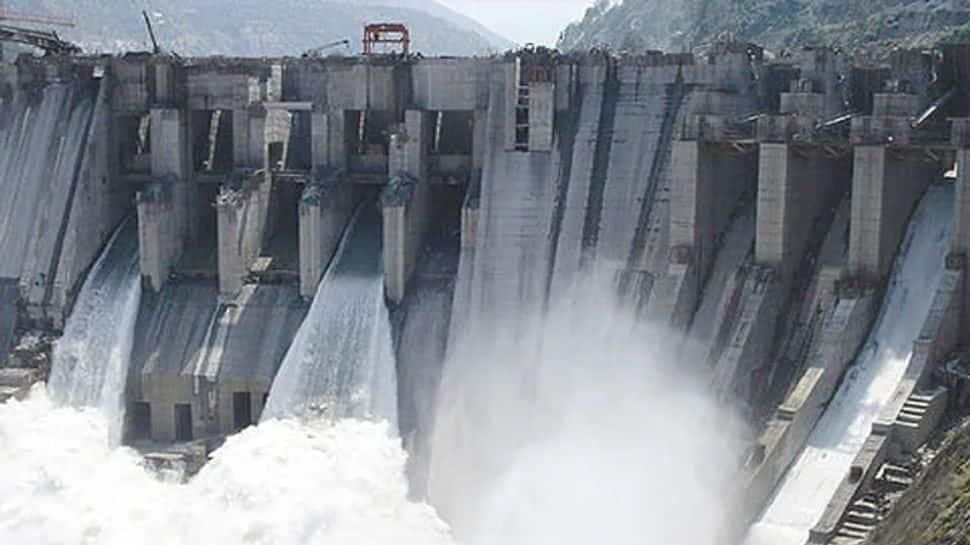 Why in News?
Why in News?
Months after India decided to suspend the Indus Waters Treaty (IWT), the nation is taking steps to revive the long-dormant Sawalkote Hydropower Project, which was initially proposed over 60 years ago but faced delays due to treaty obligations with Pakistan.
Key Takeaways
- The Sawalkote Hydropower Project is a proposed 2,185 megawatt (MW) run-of-the-river hydroelectric plant.
- It will be located on the Chenab River in the Ramban District of Jammu and Kashmir.
- This project will be the largest hydroelectric initiative in the Union Territory and one of the most significant in North India.
- Estimated cost of the project is approximately ₹22,704 crore.
- The project aims to generate over 7,000 million units of electricity annually.
Additional Details
- Collaborating Entities: The project will be executed by the National Hydroelectric Power Corporation (NHPC) Ltd in collaboration with the Jammu and Kashmir State Power Development Corporation Limited (JKSPDC).
- Infrastructure Features: It will include a 5-metre roller-compacted concrete gravity dam to regulate water flow.
- This initiative is expected to improve power availability in Jammu and Kashmir, particularly during the winter months when shortages are common.
- The project has the potential to transform J-K into a power-surplus region, enabling the export of surplus energy to the national grid.
- Additionally, by regulating the flow of the Chenab River, the Sawalkote project could assist in flood mitigation downstream and improve water management for agricultural and domestic uses.
In summary, the revival of the Sawalkote Hydropower Project is significant as it aims to enhance energy security in Jammu and Kashmir while also addressing environmental concerns and water management challenges.
GS2/International Relations
How does the World Bank classify countries by income?
Source: World Bank
Why in News?
Recently, the World Bank’s 2024 update to its income classification system revealed significant shifts, including a sharp decline in low-income populations and a rise in upper-middle-income countries.
Key Takeaways
- The share of the world population in low-income countries decreased from 37.4% in 2004 to 7.6% in 2024.
- Upper-middle-income countries saw their population rise from 8.9% in 2004 to 34.7% in 2024.
- The lower-middle-income group remained stable at around 38-40% of the global population.
- High-income nations fluctuated, peaking at 18.9% in 2014 and declining to 17.4% in 2024.
- Countries like India and Indonesia moved to higher income groups, while some African countries remained or slipped into low-income status.
Additional Details
- World Bank's Income Classification: Countries are classified into four income groups based on their Gross National Income (GNI) per capita. This classification is updated annually, adjusting for global inflation and income changes.
- Income Thresholds:
- Low income: GNI per capita ≤ $1,135
- Lower-middle income: $1,136 – $4,465
- Upper-middle income: $4,466 – $13,845
- High income: GNI per capita ≥ $13,846
- GNI per capita Usage: It measures the average income per person, including income from abroad, with figures converted to USD using exchange rates.
- Reasons for Shifts: Economic growth, currency exchange fluctuations, and population growth rates can lead to countries shifting between income groups.
For example, India’s GNI per capita increased from $2,250 in 2022 to $2,610 in 2023, while Egypt saw a decline from $3,890 in 2022 to $3,240 in 2023 due to currency depreciation.
Challenges for India as a Lower-Middle-Income Country
- Limited Fiscal Space: India struggles to allocate sufficient funds for healthcare, education, and infrastructure, with public health spending at around 2% of GDP.
- High Income Inequality: Wealth distribution remains unequal, with the top 10% holding nearly 77% of total national wealth.
- Jobless Growth: Economic expansion hasn't created enough formal sector jobs, leading to high unemployment rates among youth.
Government Initiatives
- PM Gati Shakti Mission: Enhances infrastructure development for better connectivity and job creation.
- National Education Policy (NEP) 2020: Aims to improve access, equity, and quality in education.
- Ayushman Bharat Scheme: Provides free healthcare to over 50 crore people.
- Make in India & PLI Schemes: Promote domestic manufacturing and boost employment.
- Digital India & Skill India: Focus on digital inclusion and vocational training for youth.
Way Forward
- Accelerate Inclusive Economic Growth: Focus on MSMEs and rural entrepreneurship to boost job creation.
- Invest in Human Capital: Improve education quality, healthcare access, and nutritional outcomes.
- Strengthen Social Safety Nets: Expand direct benefit transfers and targeted subsidies to reduce inequality.
- Promote Technological Innovation: Support startups and digital infrastructure to enhance productivity.
This comprehensive approach will be essential for India to navigate its challenges and leverage opportunities as a lower-middle-income country.
Mains PYQ:
[UPSC 2013] The World Bank and the IMF, collectively known as the Bretton Woods Institutions, support the structure of the world’s economic and financial order. While they exhibit many common characteristics, their roles, functions, and mandates are distinctly different. A fundamental aspect of the World Bank’s function is its income classification system, initially designed to determine eligibility for loans based on a country’s average income.
GS3/Environment
Pilibhit Tiger Reserve (PTR)
Source: TOI
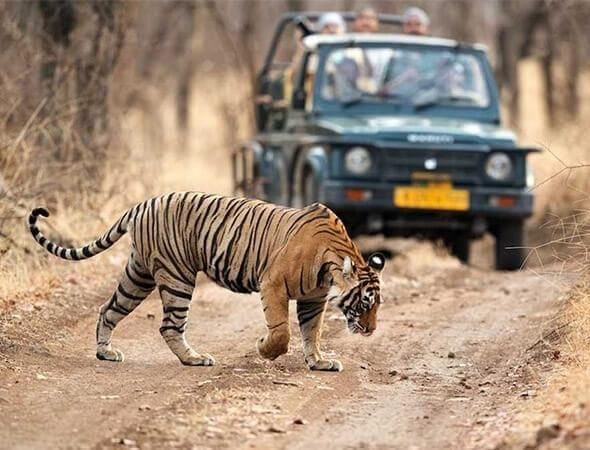 Why in News?
Why in News?
The tiger population in Pilibhit Tiger Reserve (PTR) has seen a significant increase, rising to approximately 80 from 71 over the past three years, as reported by an internal survey conducted in collaboration with the World Wide Fund for Nature (WWF).
Key Takeaways
- The PTR is located in the Pilibhit, Lakhimpur Kheri, and Bahraich districts of Uttar Pradesh.
- The total area of the reserve is 730 sq.km, with 602 sq.km designated as the core zone.
- It features various habitats, including dense sal forests and alluvial grasslands.
Additional Details
- Geographical Location: The reserve lies along the India-Nepal border at the foothills of the Himalayas and is part of the Terai Arc Landscape.
- Rivers: The Gomti River originates from PTR and serves as a catchment area for other rivers, including Sharda, Chuka, and Mala Khannot.
- Climate and Soil: The reserve experiences a dry and hot climate, characterized by dry teak forests and Vindhya Mountain soils.
- Vegetation: Key forest types include Tropical Moist Deciduous Forests, Tropical Dry Deciduous Forests, and various swamp forests, with sal woodland being particularly dense.
- Flora: The reserve hosts diverse grass species such as Sacchrum, Sclerostachya, and Vetiveria, contributing to its rich biodiversity.
- Fauna: The PTR is home to endangered species like tigers and swamp deer, along with a variety of birds such as the Great Hornbill and Bengal Florican.
The ongoing conservation efforts in Pilibhit Tiger Reserve play a crucial role in maintaining biodiversity and protecting endangered species, making it an essential ecological area in India.
GS3/Environment
Bird Deaths in Thar Desert
Source: The Hindu
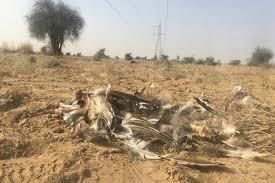 Why in News?
Why in News?
A recent study conducted by the Wildlife Institute of India (WII) has revealed alarming data regarding bird mortality rates at wind farms in the Thar Desert of Rajasthan, indicating that these locations have the highest recorded bird mortality rates globally.
Key Takeaways
- The study surveyed an area of 3,000 sq. km in Jaisalmer, Rajasthan, encompassing 90 wind turbines and 272 bird species, including the critically endangered Great Indian Bustard.
- A total of 124 bird carcasses were found within a 150m radius of the turbines, leading to an estimated annual mortality of 4,464 birds per 1,000 sq. km.
- In control sites, 28 locations (500–2,000m from turbines) showed zero carcasses, confirming the turbines as the direct cause of bird deaths.
Additional Details
- Policy Gap: Current regulations do not mandate Environmental Impact Assessments (EIAs) for onshore wind projects in India, undermining ecological protections.
- India’s Wind Energy Growth: In the first half of 2025, India added 3.5 GW of wind power, marking an 82% increase year-on-year, with a total installed capacity now at 51.3 GW. The untapped potential is estimated at 1163.9 GW at 150 meters above ground level (National Institute of Wind Energy).
- Comparison with Past Studies: A study in 2019 reported only 0.47 bird deaths per turbine per year in Kutch and Davangere, while the current study shows a rate of 1.24 bird deaths per turbine per month in the Thar Desert.
- Contributing Factors: Factors such as high bird density in the Thar, its location along the Central Asian Flyway, and collisions with turbine-linked power lines were noted.
Proposed Mitigation Measures
- Technological: Suggestions include painting one turbine blade for better visibility and shutting down turbines during peak migration or high-risk periods.
- Planning-Based: Careful site selection is deemed the most critical step. Tools like AVISTEP (Avian Sensitivity Tool for Energy Planning) are recommended to map avian sensitivity across India, ranking areas from low to very high for site avoidance.
The situation regarding bird deaths in the Thar Desert highlights the urgent need for improved regulatory frameworks and mitigation strategies to protect avian populations while balancing India’s growing wind energy needs.
GS3/Science and Technology
ICRISAT's AI-based Agromet Advisory Service
Source: Business Line
Why in News?
The International Crops Research Institute for the Semi-Arid Tropics (ICRISAT), in collaboration with the Indian Council of Agricultural Research (ICAR), has launched an innovative AI-based Agromet Advisory Service aimed at enhancing agricultural practices and supporting farmers in adapting to climate change.
Key Takeaways
- The service leverages Artificial Intelligence (AI) and Machine Learning (ML) to deliver real-time, tailored climate advisory services.
- It focuses on providing smallholder farmers with localized, actionable weather and climate insights.
- The initiative aims to assist farmers in making critical decisions regarding sowing, irrigation, and pest management.
- Advisory services will be accessible through user-friendly digital channels, including an AI-powered WhatsApp bot.
Additional Details
- Implementation Phase: The project will initially be rolled out in Maharashtra through ICAR's Agro-Meteorological Field Units (AMFUs) targeting smallholder farmers.
- Support and Collaboration: The initiative is supported under the Government of India's Monsoon Mission III and involves several organizations, including the Central Research Institute for Dryland Agriculture (CRIDA-ICAR), the International Livestock Research Institute (ILRI), the Indian Institute of Tropical Meteorology (IITM), and the Indian Meteorological Department (IMD).
- iSAT Tool: The Intelligent Systems Advisory Tool (iSAT), previously piloted during Monsoon Mission II, is being upgraded into a fully functional AI-powered platform to transform complex climate data into personalized advisories.
This initiative is expected to significantly enhance the agricultural decision-making process for farmers, particularly in areas prone to climate variability. By providing timely and relevant insights, ICRISAT aims to serve as a model for future agricultural advisory services both nationally and internationally.
GS3/Environment
Species in News: Alpine Musk Deer
Source: DTE
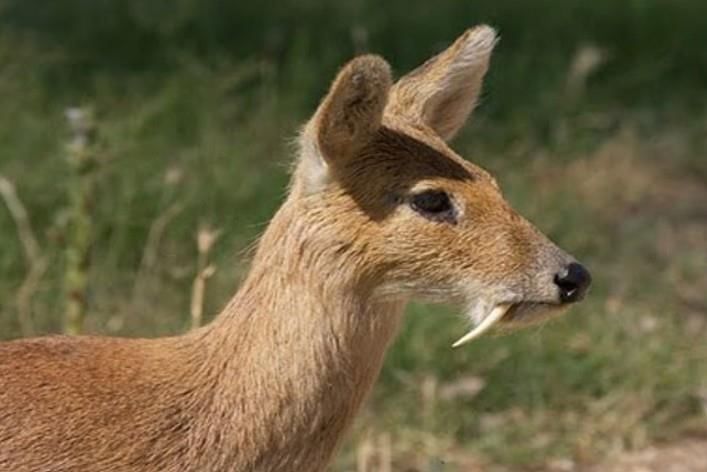 Why in News?
Why in News?
A recent report from the Central Zoo Authority (CZA) has highlighted a significant conservation mistake: the critically endangered Alpine musk deer has been mistakenly replaced by the Himalayan musk deer in India's breeding programs.
Key Takeaways
- The Alpine musk deer is critically endangered and has been misrepresented in conservation efforts.
- The CZA oversees species management in zoos and conservation programs in India.
Additional Details
- Central Zoo Authority (CZA): Established in 1992 under the Wildlife (Protection) Act of 1972, the CZA's mandate includes managing captive breeding and overseeing zoo operations.
- Expanded Scope (2022): The authority now includes rescue centers, off-display facilities, and conservation breeding centers.
- About Alpine Musk Deer (Moschus chrysogaster): This species is not a true deer but is closer to goats and antelopes in the Bovidae family.
- Habitat: Alpine musk deer inhabit forests in the Himalayas at altitudes of 3,000-5,000 meters, primarily in regions of India (J&K, HP, Uttarakhand, Sikkim, Arunachal), Nepal, Bhutan, and China.
- Diet: Their diet consists of grasses, leaves, lichens, mosses, and twigs.
- Behavior: They are solitary and primarily active during dawn and dusk (crepuscular).
- Legal Protection: Classified as critically endangered by the IUCN since 2014, listed in CITES Appendix I, and protected under Schedule I of the Indian Wildlife Act.
- Threats: The primary threats to their survival include poaching for musk and loss of habitat.
- Key Habitats: Notable areas where these deer can be found include Askot, Gangotri, and Kedarnath Wildlife Sanctuaries in Uttarakhand.
This information highlights the urgent need for correct species identification in conservation programs to ensure the survival of critically endangered species like the Alpine musk deer.
Question:
Which of the following are the most likely places to find the musk deer in its natural habitat?
- 1. Askot Wildlife Sanctuary
- 2. Gangotri National Park
- 3. Kishanpur Wildlife Sanctuary
- 4. Manas National Park
Options: (a) 1 and 2 only * (b) 2 and 3 only (c) 3 and 4 only (d) 1 and 4 only
GS2/International Relations
Another Slip Up by India in the Trade Pact with the U.K.
Source: The Hindu
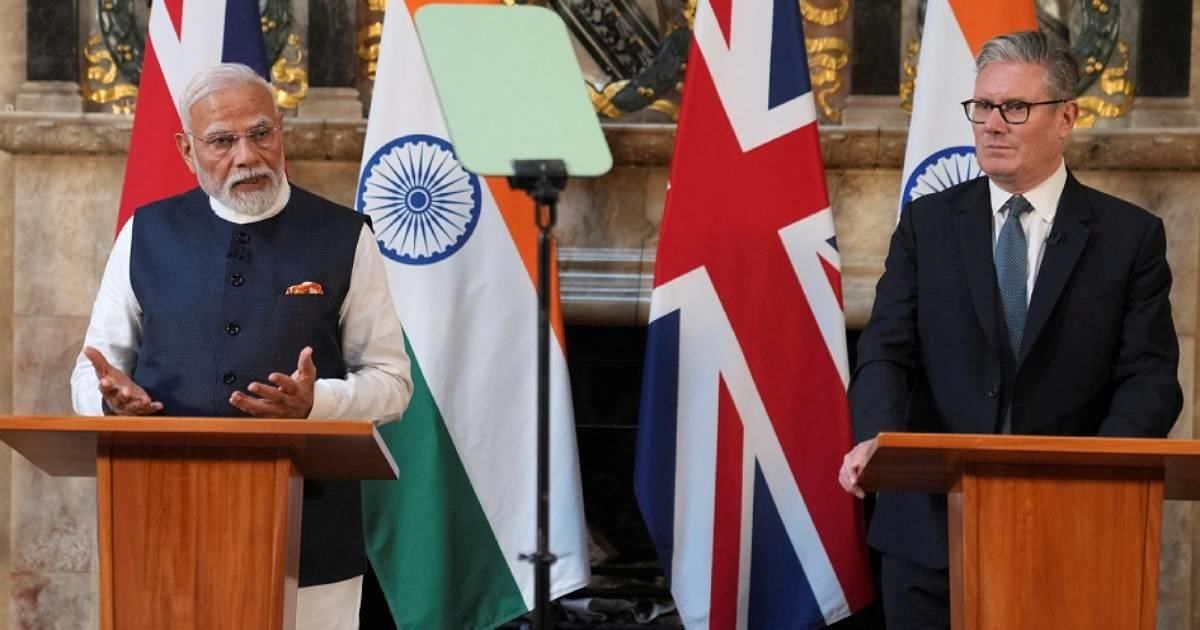 Why in News?
Why in News?
The India-United Kingdom Comprehensive Economic and Trade Agreement (CETA) introduces significant changes to India's approach toward intellectual property (IP), particularly regarding access to medicines and technology transfer. Chapter 13, particularly Article 13.6, indicates a major shift in India's policy stance, raising serious concerns about its implications for public health, access to affordable medicine, and broader developmental goals.
Key Takeaways
- Shift in India's stance on compulsory licensing, with a preference for voluntary licensing.
- Legal and policy safeguards for public health under threat.
- Concerns regarding the effectiveness of voluntary licensing for affordable access to medicines.
- Potential weakening of India's demand for favorable technology transfer terms.
Additional Details
- Dilution of India’s Position on Compulsory Licensing: Historically, India has supported compulsory licensing, allowing governments to authorize the production of patented products without the patent owner's consent. The new CETA provisions promote voluntary licensing as the preferred method for access to medicines, moving away from India's previous stance.
- Legal and Policy Safeguards under Threat: India’s alignment with the WTO’s TRIPS Agreement included mechanisms for compulsory licensing aimed at public interest. However, changes from previous free trade agreements have weakened these safeguards, reducing transparency and enforcement capabilities.
- Problems with Voluntary Licensing: Voluntary licensing depends on the consent of patent holders, often favoring powerful multinational firms over domestic producers. This has led to higher prices for medicines, as seen with the case of remdesivir during the COVID-19 pandemic.
- Broader Implications: CETA may undermine India's long-standing demand for favorable technology transfer, which is crucial for industrialization and addressing climate change. This shift could diminish India's leverage in international negotiations.
In conclusion, India's commitments under the CETA's intellectual property chapter represent a significant shift in policy priorities, impacting public health, access to affordable medicines, and technology transfer rights. The prioritization of voluntary licensing over compulsory licensing could dilute essential safeguards, potentially leading to reduced access to medicines and slower progress toward sustainable development.
|
44 videos|5271 docs|1113 tests
|
FAQs on UPSC Daily Current Affairs: 4th August 2025 - Current Affairs & Hindu Analysis: Daily, Weekly & Monthly
| 1. What is the significance of El Salvador's Presidential Reelection Bill? |  |
| 2. What are the capabilities and implications of the HQ-16 missile system? |  |
| 3. How do biologics and biosimilars contribute to affordable medicines? |  |
| 4. What are the challenges posed by collusive litigation? |  |
| 5. What is the role of the Central Industrial Security Force (CISF) in India? |  |





















